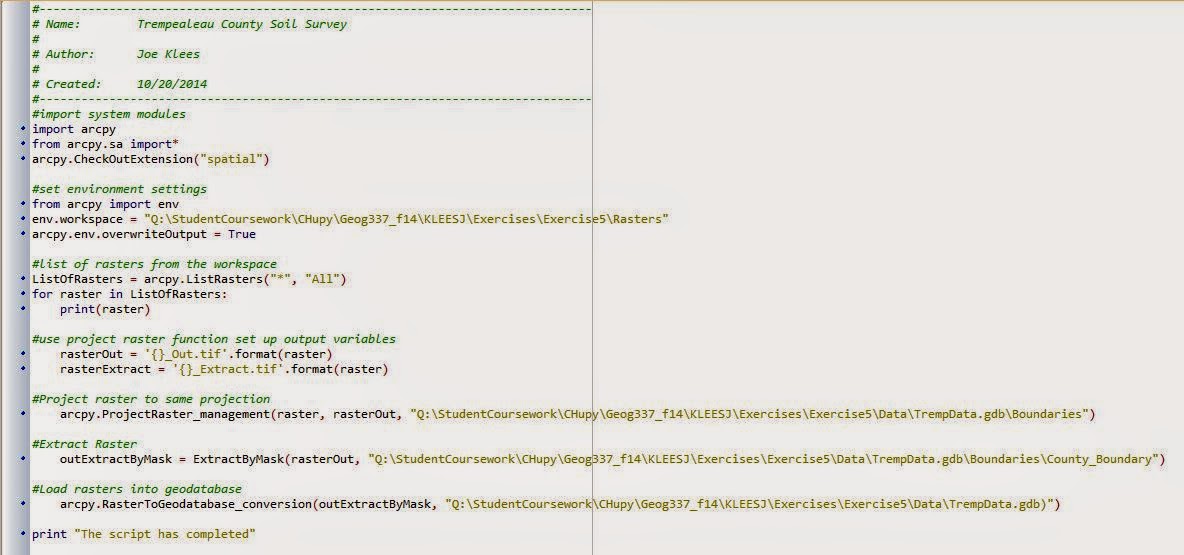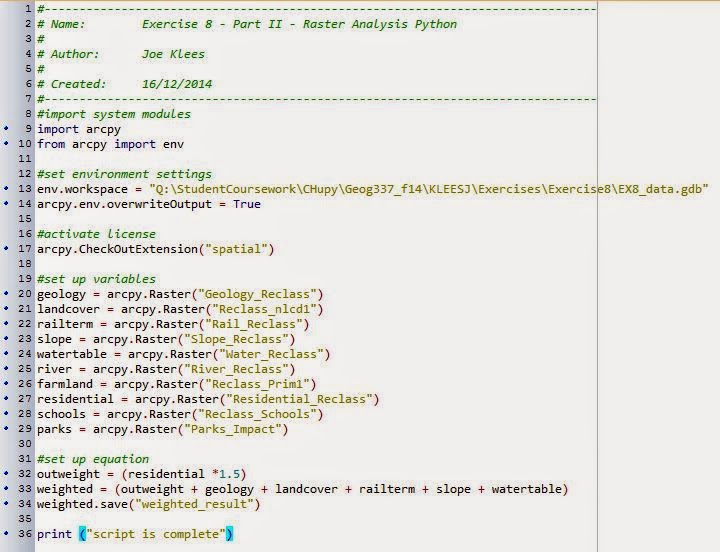Introduction - This exercise was focusing on gathering
data and we used land cover data for Trempealeau County as an example. There
were four steps to this process; downloading the data, importing and joining
the data, and then writing a script to project and clip the data.
Data gathering – We downloaded the data from multiple
websites:
-
Rail line feature classes from the US Department
of Transportation website.
-
An elevation map from the USGS National Map
site.
-
An agricultural use map from the USDA Geospatial
Data Gateway.
-
Trempealeau County land records from the
Trempealeau County Land Records site.
-
Soil information from the USDA NRCS Web Soil
Survey.
The websites all gave the data in zipped files and I then
extracted them into a common folder. Next I needed to join the attribute tables
from the soil survey and the Trempealeau County geodatabase in order to
normalize the projection and join the soil information into the land use
record. I imported SSURGO data from Microsoft Access in order to join the
tables which included a common key for the data to join correctly.
To put the data into a neat map I wrote a Python script
which can be seen in the Python scripting blog post under exercise 5. This
clipped the data into just the county of Trempealeau and projected the data
into the correct projection. It also loaded the finalized feature class into
the Trempealeau geodatabase. The resulting map is shown below, incorporating
all of the downloaded data into one poster.
Data Accuracy – The table below shows parameters from the metadata for each of the separate data records that were downloaded.
Record
|
Scale
|
Effective Resolution
|
Minimum Mapping Unit
|
Lineage
|
Temporal Accuracy
|
Rail Lines
|
1:24000
|
30m
|
30m
|
US Department of Transportation
|
2014
|
NLCD
|
1:24000
|
30m
|
30m
|
USGS
|
2011
|
DEM
|
1:100000
|
10m
|
10m
|
USGS
|
2013
|
NASS
|
1:100000
|
30m
|
30m
|
USGS
|
2013
|
Trempealeau
|
1:24000
|
30m
|
30m
|
Trepealeau County Land Records
|
2014
|
US Department of Transportation Bureau of Transportation Statisics Link
USGS National Map Viewer Link
USDA Geospatial Data Gateway Link
Trempealeau County Land Records Link
USDA NRCS Web Soil Survey Link





